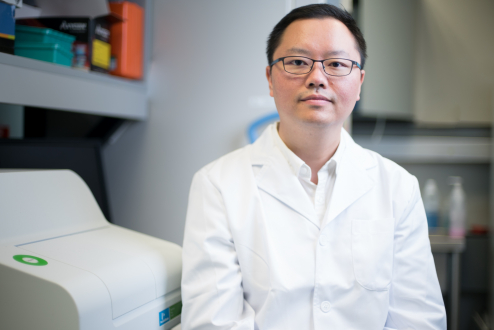Research Stories
VP(R)'s Picks: New Chromatin 'Road Sign' Discovered
Back
Histones help to regulate gene expression as part of the chromatin, which sits at the centre of every cell. The discovery of a new histone mark, called H4K91glu, by Dr Xiang David Li and his team opens the way to a better understanding of human health and disease.
Our DNA comes packaged with proteins called histones in a structure called chromatin, which regulates gene expression, DNA replication and damage repair. Histone marks act as “road signs” to indicate if a region is active, inactive or damaged. Being able to identify more such road signs is essential to understanding how cells make changes to their chromatin structure in response to DNA-associated processes.
A new joint study by chemists and biologists at HKU has contributed to that goal through the important discovery of a new road sign (histone mark) called H4K91glu.
Dr Xiang David Li of the Department of Chemistry, Dr Karen Wing Yee-yuen of the School of Biological Sciences and Dr Jason Wing Hon-wong of the School of Biomedical Sciences discovered H4K91glu, which they believe is a road sign for activating gene expression. They were able to determine this function because of the histone mark’s placement. DNA and histones can be either loosely packaged, which indicates an active gene region, or tightly packaged, which indicates a “silent” region. H4K91glu was found in a “loose” region, where it activates chromatin by destabilising its nucleosome, which is chromatin’s basic repeating unit.
Importantly, the researchers also found H4K91glu to be present not only in humans but mice, flies, worms and even baker’s yeast cells, indicating it has been preserved through evolution.
The discovery helps to bring science one step closer to deciphering the highly complex chromatin maze and opens opportunities for developing therapeutic agents to treat human diseases associated with mis-regulation of histone modification and chromatin structure.

Related paper: Bao X., Liu Z., Zhang W., Gladysz K., Fung Y.M.E., Tian G., Xiong Y., Wong J.W.H., Yuen K.W.Y. and Li X.D. , “Glutarylation of HIstone H4 Lysine 91 Regulates Chromatin Dynamics”, Molecular Cell, 2019, 76 (4), P660-675. E9




